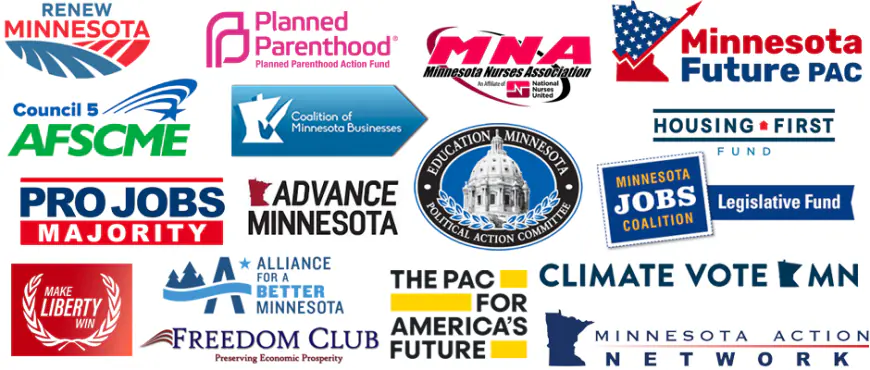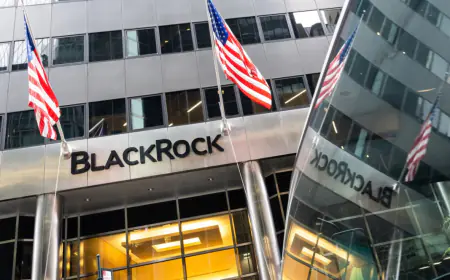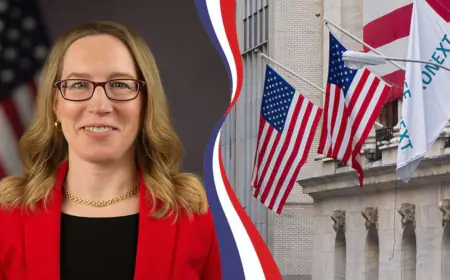Campaign spending not even close between DFL, GOP in race to control Minnesota House
The DFL currently has just a four-seat majority but has raised and spent far more money than the GOP on campaigns for contested seats. The post Campaign spending not even close between DFL, GOP in race to control Minnesota House appeared first on MinnPost.


A press release issued this week by the Minnesota House Republican campaign arm says a lot about the 2024 race for control of the House. With the DFL holding a narrow advantage and with just a dozen or so races that are truly up for grabs, record funds are being spent this election.
“Republicans have the momentum and resources heading into the final stretch to win the majority and restore balance to Minnesota,” House Minority Leader Lisa Demuth said in the release. How many resources? The House Republican Campaign Committee has raised $2.7 million this year, on top of the $700,000 it carried over from 2023 — that’s more than $800,000 over the previous record set in 2018.
While it says a lot about House GOP efforts, it says more about the financial imbalance between the parties in Minnesota. Demuth’s counterpart, DFL House Speaker Melissa Hortman, presides over a campaign fund that has raised $9.2 million in 2024 and brought $1.25 million over from last year.
The House DFL has more money in the bank — $3.6 million — than the House GOP has raised in two years, according to the campaign’s final state Campaign Finance Board reports posted this week.
Some of those battleground districts help tell the story. Rep. Jeff Brand, DFL-St Peter, is defending his seat against GOP challenger Erica Schwartz. The House DFL caucus has already spent $381,000 helping Brand, either by sending positive messages about him or negative messages about Schwartz.
The GOP knows how important that race is as well but has so far spent just $95,000 in District 18A.
In District 3B, incumbent Rep. Natalie Zeleznikar is defending a seat she took from the DFL two years ago by 33 votes. She is being challenged by former judge Mark Munger. The House GOP has spent $106,000 in the Lake Superior fronting district; the House DFL $304,000.
Money comes from unions, from House DFL candidates with less-competitive races, and from national funders who know that Minnesota is one of just a handful of states where legislative chambers are competitive. The PAC for Minnesota’s Future, funded primarily by New York donor Barry Munger, gave the House DFL $1.4 million. The Democratic Legislative Campaign Committee has given $1.15 million.
The House DFL has not only been able to expand the map — investing in districts that are either already relatively safe for their candidate or are not on most lists of vulnerable GOP seats — they have been able to spend in ways unthought of in leaner years. MPR’s Capitol View reported last week that Brand is benefiting from broadcast TV ads. While more-targetable cable ads are not uncommon in legislative races, the geographic breadth of a broadcast station means ads are more expensive and reach a lot of voters outside the district.
The funding mismatch would be troublesome enough for the GOP campaigns if the caucuses were the only sources of money in Minnesota House elections. They are not. The DFL party is a financial engine that pays for much of the campaign infrastructure around the state. And a series of DFL-affiliated political funds and a potent set of independent expenditure committees that give to DFL candidates and causes makes the mismatch even more obvious. The latest reports follow a pattern shown in the previous election finance reports posted in September and over the last decades: a permanent fundraising and spending apparatus that helps the DFL in Minnesota.
Sticking with districts 3B and 18A to illustrate the way committees not directly associated with candidates dominate campaigns, Brand has benefited from $794,000 from independent expenditure committees while Schwartz has benefited from $457,000.
In 3B, Munger has seen $775,000 spent to boost his candidacy or damage Zeleznikar’s. The GOP incumbent has benefited from $559,000 in independent expenditure spending. The money spent by the parties and political groups far overwhelms the candidates’ own resources. Brand has raised $76,000, Schwartz $52,000, Zeleznikar $74,000 and Munger $126,000.
DFL committees, paced by the trio of fundraising and spending groups called the Alliance for a Better Minnesota, WIN Minnesota and the We All Do Better fund, dominate campaign finance in Minnesota.
The Alliance for a Better Minnesota receives money from the two other funds as well as national Democratic organizations focused on winning state legislative races. ABM has paid a California vendor Left Hook $2.3 million to produce and place TV and digital ads. It has also paid an Apple Valley polling firm — Project Lakes and Plains — $273,000 for research.
Four of the top five independent expenditure committees are DFL affiliated. In the list of political committees, the DFL’s allies take seven of the top 10 spots. Union committees dominate the political committee list, giving money to the caucuses and independent expenditure committees as well as making donations directly to candidates.
The GOP and its affiliates are making gains this election cycle with two new committees added to the traditional business-related committees. Renew Minnesota is the political arm of the Minnesota Private Business Council that is led by 2022 GOP attorney general nominee Jim Schultz. The New Fund was started by Jeff Larson, a state and national GOP political consultant and is primarily funded by the Republican State Leadership Committee. The RSLC is a national political group focused on winning state legislative chambers.
Also active in Minnesota battleground races is Make Liberty Win, a Virginia-based funding group.
Because money is moved around among funds and committees, some can be double counted. But since it can only be spent once on candidates, the expenditure totals for battleground districts are the best place to see the funding differences between the two major parties and their candidates. Again, DFL candidates benefit more from this spending than GOP candidates.
Still, the state’s campaigns are competitive with the DFL holding just a four-seat edge in the House and a single-seat advantage in the Senate. And as recently as 2020 for the Senate and 2016 for the House, Republicans won majority control.

Peter Callaghan
Peter Callaghan covers state government for MinnPost. Follow him on Twitter @CallaghanPeter or email him at pcallaghan@minnpost.com.
The post Campaign spending not even close between DFL, GOP in race to control Minnesota House appeared first on MinnPost.
What's Your Reaction?









































































































